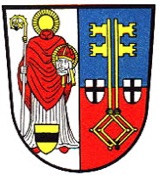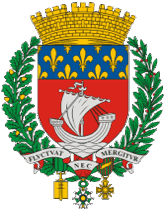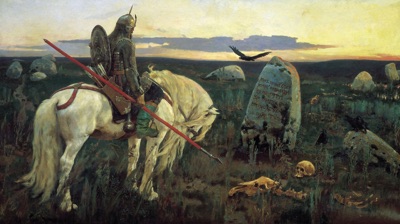Wishful thinking and getting it right
Because I have been checking into the Raitt families for some years now and endeavour to verify and double check references and resources, then I know when some things don’t see quite right when you come across them on the web. Of course, erroneous information is not meant to deceive - it’s perhaps more that wrong assumptions or fanciful interpretations have been made about certain facts or to try and prove a certain point. Sometimes there are indexing errors - I recently looked up in ScotlandsPeople (SP) the death of a William Raitt in 1927 in Inverness (quite why now escapes me!) and of the three records on the page, not one related to William! I reported the indexing error to SP and heard back from them this very morning that they were sorry for the error, would correct it in due course, and they had reimbursed me my six credits - which was nice!
But I also came across an ancestry tree on RootsWeb that quoted a text saying that Sir Alexander Gervaise de Raite/Rathe killed Andrew, 4th Thane of Cawdor by the water dam at Rait in 1405. The location of Rait was given as Perthshire! I can conceive of no reason why Alexander and Andrew should have been together in Perthshire, let alone near the village of Rait there! Clearly, it is (the Castle of) Rait in Nairn that is referred to! I wrote to the person posting it pointing out what I believed was an error, but have received no reply.
I was also intrigued because of Alexander’s middle name Gervaise - where did that come from? Was he a great or great great grandson of the first Sir Gervaise de Rathe - it would imply so. And incidentally where did the bit about the water dam come from too. I had not come across either of these facts in my own research. The text in question was from an article on the Inverness part of the Internet Guide to Scotland relating to castles and in particular the Cawdor/Calder family. The author gave as his sources for the list of Thanes of Cawdor, Anderson’s Scottish Nations and documents in the Inverness Library. Well, the detail is not included in Anderson’s book, nor in the Thanes of Cawdor book itself. Maybe they are contained in some fragment of papers relating to Cawdor that are not online. So I asked the author for his source for those two snippets of information, but again no reply has been yet forthcoming.
Then there is all the stuff about the engrailed cross Gervaise, his brother and many later Raitts bore on their shields. I wanted to find a little more about the symbolism of it to add to what is there already on the Heraldic Symbolism page. On one website it is claimed that in a Christian context, the spikes of the engrailed cross, represent the thorns piercing Jesus’ head during his crucifixion - and since the pattern looks like waves on the ocean, then it is also called a wavy cross. It also says that engrailed simply means dimpled with concave curves. The grail element of the word reminds us of the Holy Grail, the cup used by Jesus at the Last Supper. Further, the word is distantly related to grill, implying protection. But then I came across a Clan Sinclair website (the Sinclair coat of arms is a black engrailed cross on a white ground) which has taken these same ideas and run with them!
The bit about the engrailed cross starts with a quote from "The Bloodline of the Holy Grail" by Laurence Gardner. "The name Saint Clair is derived from the Latin Sancto Claro which means Holy Light. In the engrailed cross of the Sinclairs, the esoteroic female symbol "V" represents the Chalice of Life whereas its male counterpart ^ (a V in reverse) symbolises the Spear of Virility. When conjoined one above the other (X) they indicate Unity and the engrailed sequence denotes Generation. An engrailed cross is, therefore, indicative of Holy Generation".
The text on the website then goes on to say that “it may also indicate the union of two Royal Houses in so far as Jesus belonged to the Royal House of David (as is shown in stem of Jesse in Rosslyn Chapel) whilst Mary Magdalene (who he put above his 'brothers') was from the Royal House of Benjamin. She is also 'seen' in Rosslyn Chapel where she is represented by the five-petalled rose - the sacred feminine.
More commonly the engrailed cross has been described as being indicative of the protection of the True Cross i.e., the True Cross is encased within the grail or grille i.e., engrailed. The St. Clairs were said to be the protectors of the Grail which gave rise to the (erroneous) belief that the Holy Grail was encased within the Apprentice Pillar in Rosslyn Chapel.
Elsewhere, the four arms of the engrailed cross are referred to as the four rivers of Eden or, less romantically, to the scales of the dragon of wisdom. The dragon or sea serpent - bistea neptunis - (as seen on Prince Henry Sinclair's coat-of-arms) has always represented the ultimate symbol of sovereignty with Celtic people.
Sufficient be it to say that the engrailed cross has appeared on the coats-of-arms of most Sinclairs branches for many centuries. It has appeared on the shields of our forebears, on the sails of our ships, on the ceilings of our castles and, above all, in the intricate architectural splendour of Rosslyn Chapel.”
In a Sinclair thread from 2001 some of the above is repeated (it may have come first) with additions…. “The engrailing is said to 'protect' the true cross of which the Sinclairs were guardians. At its centre it also embraces or encompasses the croix pattee of the Knights Templar which is readily discernible if you cover the cross at the first knuckle of each limb. This is particularly apparent at Rosslyn Chapel where the engrailed cross is incorporated into each and every arched dome.
The four arms are also said to represent the four rivers of paradise. The engrailed cross has been a central part of the Sinclair arms since Norman days. It is also incorporated in the coat of arms of the City of Paris because of our defence of that City.”
Now, far be it from me to take issue with what people believe to be their family history and what they choose to incorporate into it, but it is interesting what they claim for themselves. The Sinclairs were certainly not the only ones to have an engrailed cross - nor the earliest (see Heraldic Symbolism)! They may have been in Paris to defend it at some early juncture, but the Sinclair arms are certainly not incorporated into the coat of arms of the City of Paris (below right). However, the coat of arms of Denis, Bishop of Paris (below centre) in the third century (somewhat before the Sinclairs!) does contain two black crosses on a white background - but they are not engrailed (below left)
And in the quote from the Bloodline of the Holy Grail book above, the engrailed cross of the Sinclairs is not an X (saltire) which the Vs conjoined one above the other would represent!
On the Heraldic Symbolism page I give some information about the original French blazon term engreslé taken from the book by Gerard Brault entitled Early blazon: heraldic terminology in the twelfth and thirteenth centuries. To my knowledge, it would appear that the term has nothing to do with the Holy Grail nor does it mean grill and hence, by association, protection! Indeed, in terms of Scottish cadency differencing an engrailed bordure or charge was the mark of younger sons - thus Sir Gervaise de Rait and his brother Andrew may have been third generation.
My point is, really, that you can sometimes read too much into things and also almost blindly accept facts at face value. I try and be as accurate as I possibly can, and when in doubt, I use words like perhaps or possibly and I try and give alternatives and speculations. For instance, we are probably descended from the Raits of Hallgreen and may even very well be ultimately descended from Sir Gervaise of Rait Castle - but we cannot prove this at the moment until more charters and documents pertaining to the period are discovered in dusty libraries - and maybe not even then. We also have some Raitts who can legitimately claim they are related to Bonnie Raitt, but others that like to think they are, but are probably not, at least in the relatively recent past. Another claim by some is that they can trace their ancestry back to British royalty either by tenuous links or by virtue of DNA. Is it also wishful thinking? Take it all with a pinch of salt!
Monday 28 September 2015




